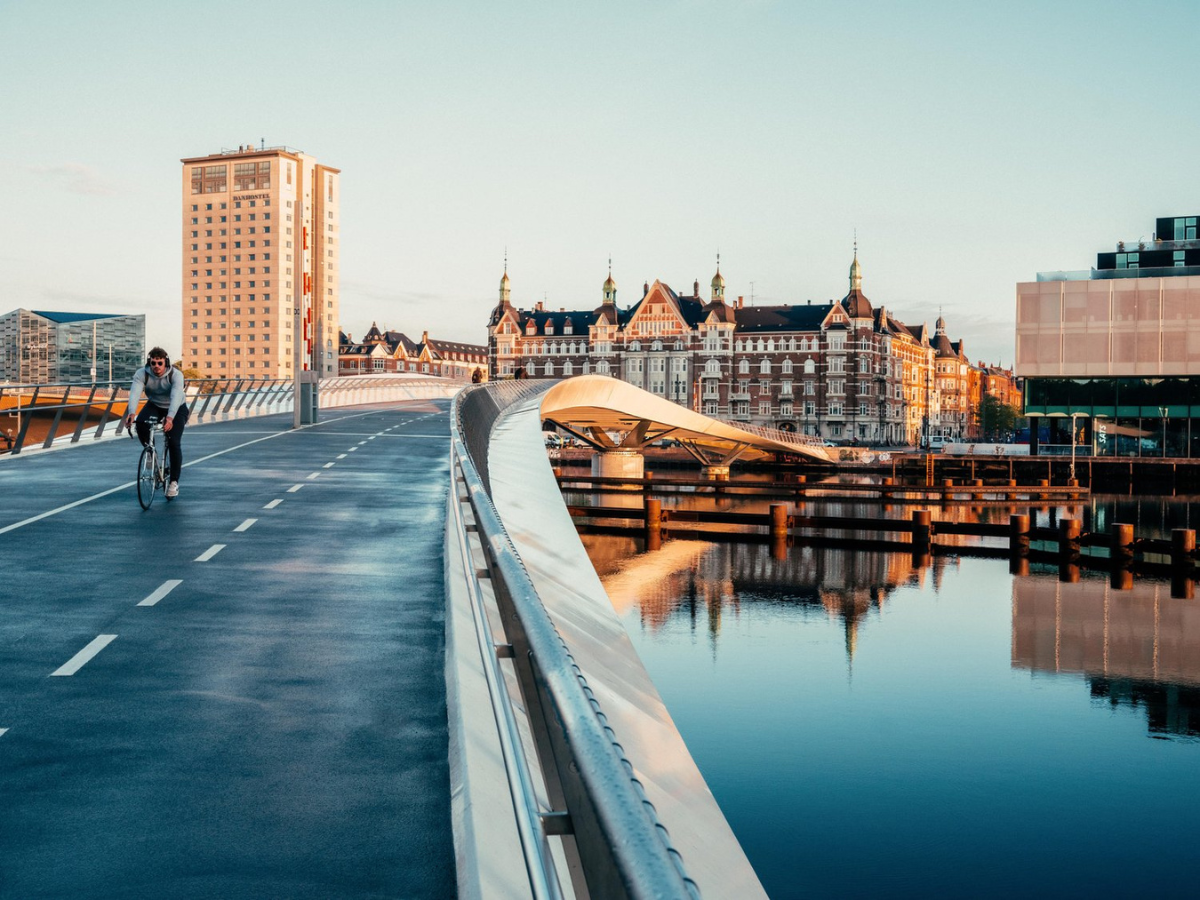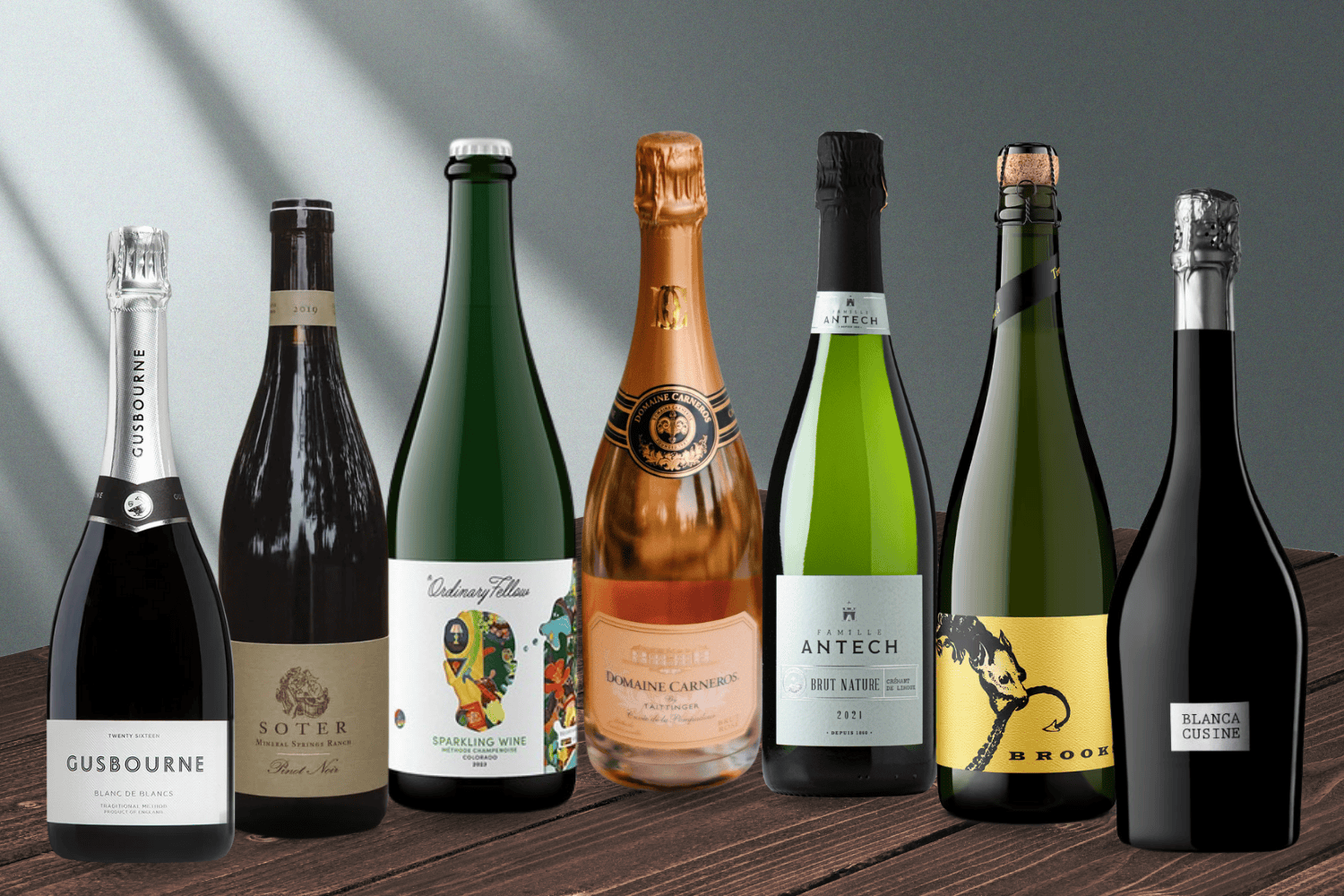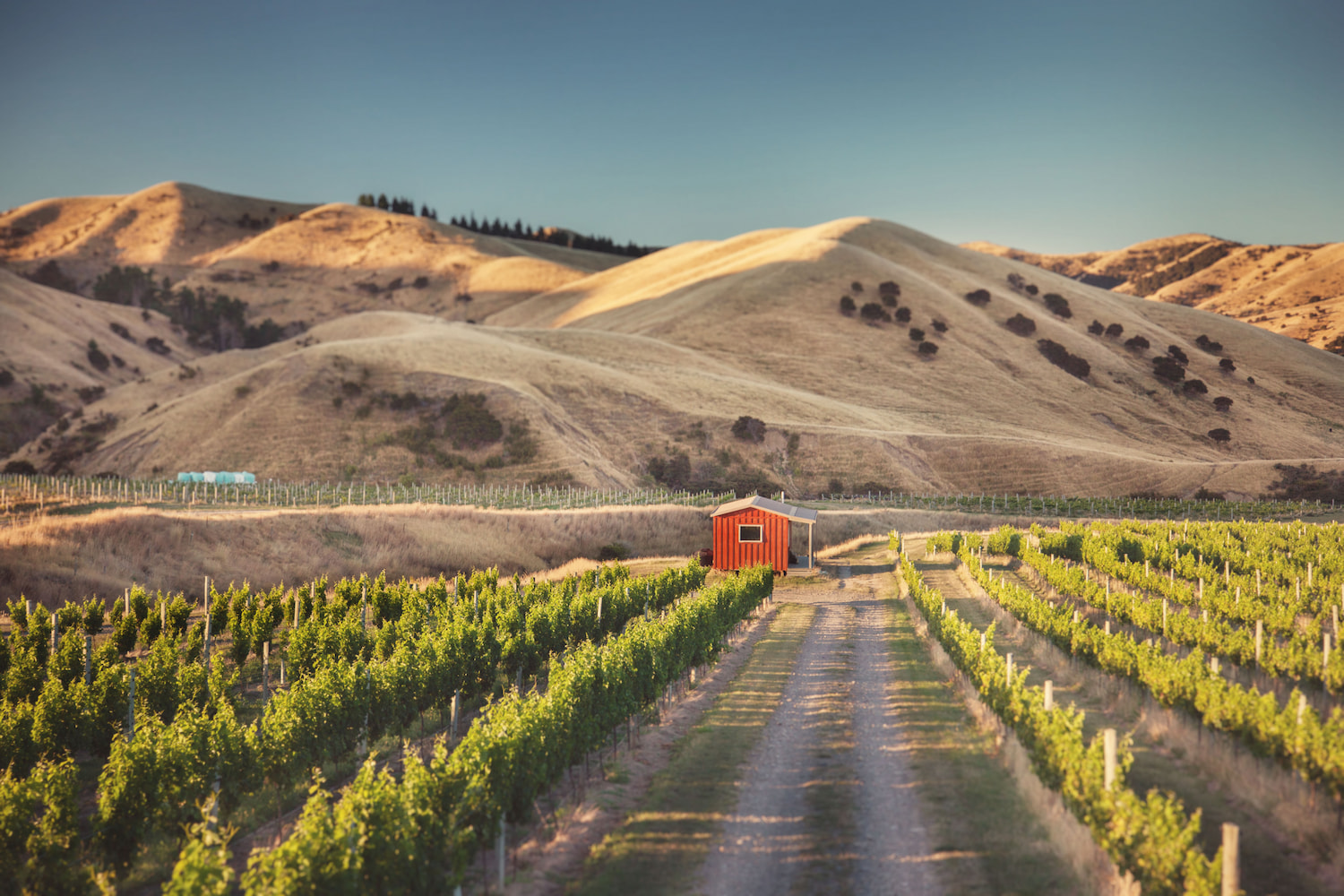“Copenhagen shows what’s possible when climate goals shape daily life.”

Everyday cycling in Copenhagen. Courtesy of Thomas Høyrup Christensen, Visit Copenhagen.
Biking through the streets of Copenhagen in sideways rain, you quickly learn that the weather is no deterrent. Parents balance children in cargo bikes, commuters glide past in tailored suits, and even in the deep dark of a January morning, the bike lanes remain full. Or picture another afternoon: you and a friend floating quietly in an electric picnic boat along the city’s canals, a basket of rye bread, local cheeses, and a bottle of pét-nat within reach. These are not staged moments for tourists; they’re glimpses of a city where sustainability is so deeply embedded in daily life that it feels effortless, even joyful.
The pace of the city moves on two wheels. Copenhagen has invested the equivalent of millions of euros every year for a decade to expand and refine its network of nearly 250 miles (400 km) of bike paths. Forty-five percent of residents cycle to work or school daily, and the infrastructure makes it irresistible: superhighways extend well beyond the city limits, while “green wave” traffic lights are calibrated so cyclists cruising at 12.5 miles (20 km) per hour glide through intersections without stopping. For anyone who can bike, the lanes are the fastest, most natural way to see the city. And for those who don’t or can’t, buses, harbor ferries, and the Metro fill the gap — though a few expensive cab fares tend to turn even the reluctant into cyclists.
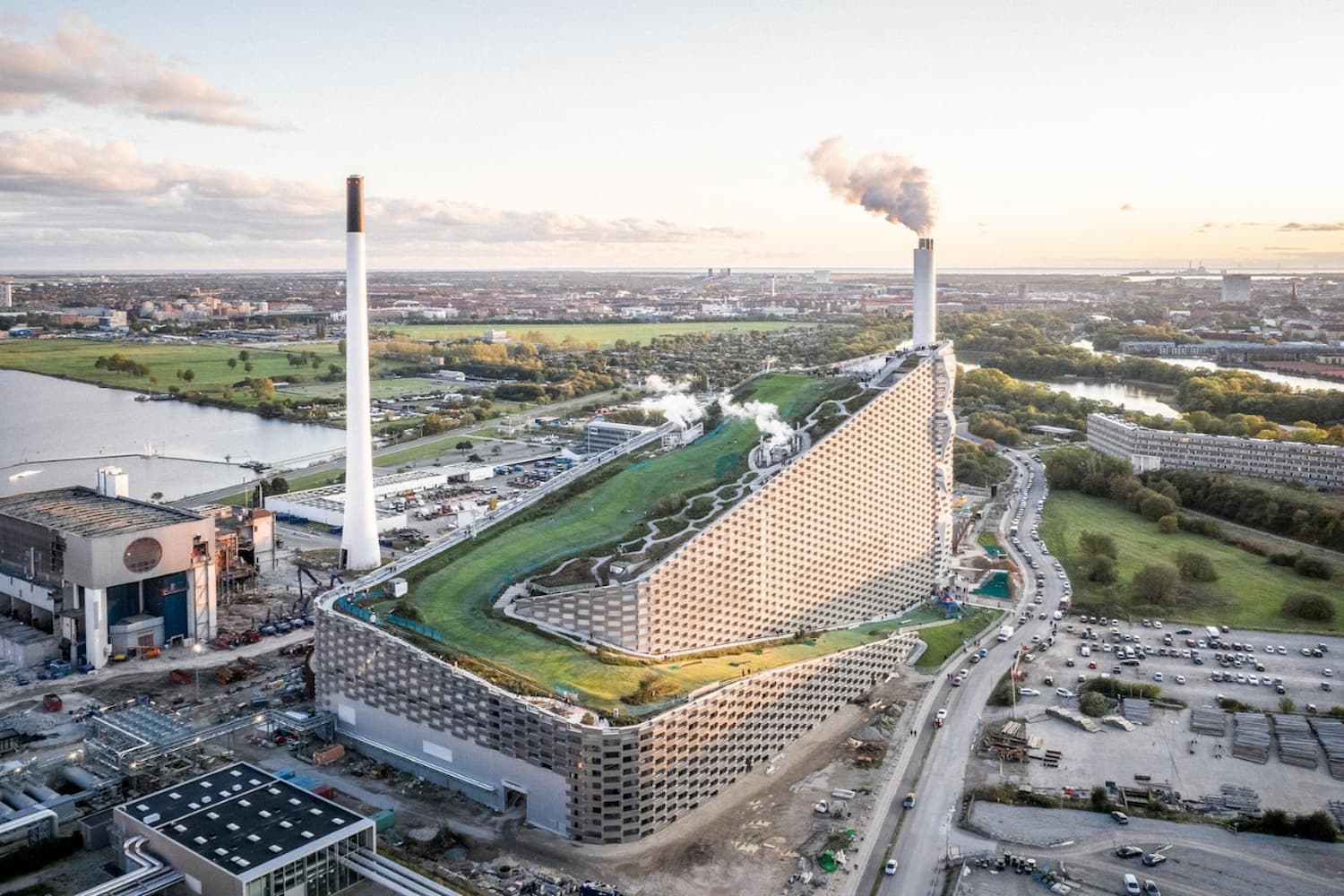
Aerial view of Winderlea Winery. Courtesy of Winderlea Winery.
Copenhagen’s Daily Experiment
Copenhagen didn’t stumble into this reputation. Two decades ago, the city declared its ambition to become the world’s first carbon-neutral capital by 2025, a bold goal that set a new global benchmark. While final completion may take a little longer, the results so far are undeniable: emissions have dropped by three-quarters since 2005. Offshore wind turbines in the Øresund Strait power households; 98 percent of homes are linked to district heating; and more than a third of hotel rooms are cooled by seawater drawn from the harbor, reducing carbon emissions by up to 70 percent compared to standard air conditioning.
The harbor has its own story. Once a polluted industrial waterway, it is now so clean that denizens dive in daily, with ten public bathing zones open nearly year-round. Even in winter, swimmers climb down ladders into water that was once off-limits, then follow it with a sauna session on shore.
The yellow harbor buses, once diesel-powered, became the world’s first fully electric public transport fleet in 2020. Today, crossing the harbor is both a commute and a daily reminder of the city’s climate ambitions.
At street level, sustainability often takes the form of playful reinvention. The most famous example is CopenHill, a waste-to-energy plant designed by Bjarke Ingels Group. It powers and heats tens of thousands of homes, but from its roof rise ski slopes, hiking trails, and the world’s tallest climbing wall.
Elsewhere, a drained reservoir has been transformed into the moody underground art space Cisternerne, and in Østerbro’s Klimakvarter, green courtyards and rain-catchment gardens manage stormwater while doubling as community spaces.
Even architecture here carries a mandate. Copenhagen was named UNESCO World Capital of Architecture through 2026, a recognition of how the city has woven climate goals into its built environment. The UN City headquarters, with solar panels, seawater cooling, and rainwater recycling, ranks among the most energy-efficient office buildings in Europe.
Timber construction is gaining ground in Nordhavn, a redeveloped harbor district built on the “five-minute city” principle, where daily needs are within walking distance and car traffic is deliberately minimized. Across the city, rooftops become playgrounds, gardens, and gyms long after office workers have gone home. This is urbanism as a blueprint for resilience.

Interior shot of Ark dining. Courtesy of Ark.
Sustainability You Can Taste
Sustainability is not confined to infrastructure — it’s also cultural. Denmark leads the world in per-capita consumption of organic food, and three out of four Danes buy it every week. Public kitchens across the capital — from schools to hospitals — serve nearly 90 percent organic meals, showing that the shift extends well beyond boutique restaurants. Even Tivoli Gardens, the city’s iconic amusement park, has Gemyse, a restaurant built around its own kitchen garden.
Restaurants, from Michelin-starred Ark to communal dinners at Kanalhuset, waste little and source locally, proving that sustainability doesn’t dampen creativity but even fuels it. Restaurants like Gro Spiseri, Grobund, and Øens Have draw directly from nearby fields or rooftop farms, turning low- to zero-waste cooking with urban harvests into a form of artistry. Natural-wine bars spill onto canal quays when the summer light lingers, while cafés like Coffee Collective print what they pay farmers directly on the menu. Breweries such as People Like Us operate as social enterprises, hiring marginalized workers and turning a beer into an act of inclusion. For visitors, the “responsible choice” rarely feels like a compromise. It’s often the most delicious thing on the menu.

Paddling for a purpose with GreenKayak. Courtesy of Daniel Rasmussen, Visit Copenhagen.
Engaging Travelers in the Effort
The city has even found ways to bring travelers directly into its systems. CopenPay, launched in 2024, invites visitors to “pay” for attractions with sustainable actions. Bike to a museum, join a harbor cleanup, eat a vegetarian meal, or volunteer in a community garden, and you might receive a ticket, a sauna session, or a guided tour in return. It’s an experiment in tourism that asks guests to contribute to the city they’re enjoying, and it works because it feels playful rather than prescriptive or burdensome.
Other programs turn civic participation into adventure. GreenKayak offers free boats in exchange for hauling trash from the water — a system that has now spread to other European cities. For a traveler, the effect is simple: you leave with wet shoes, a bucket of plastic, and the sense that you’ve experienced Copenhagen not just as a backdrop, but as a shared project.
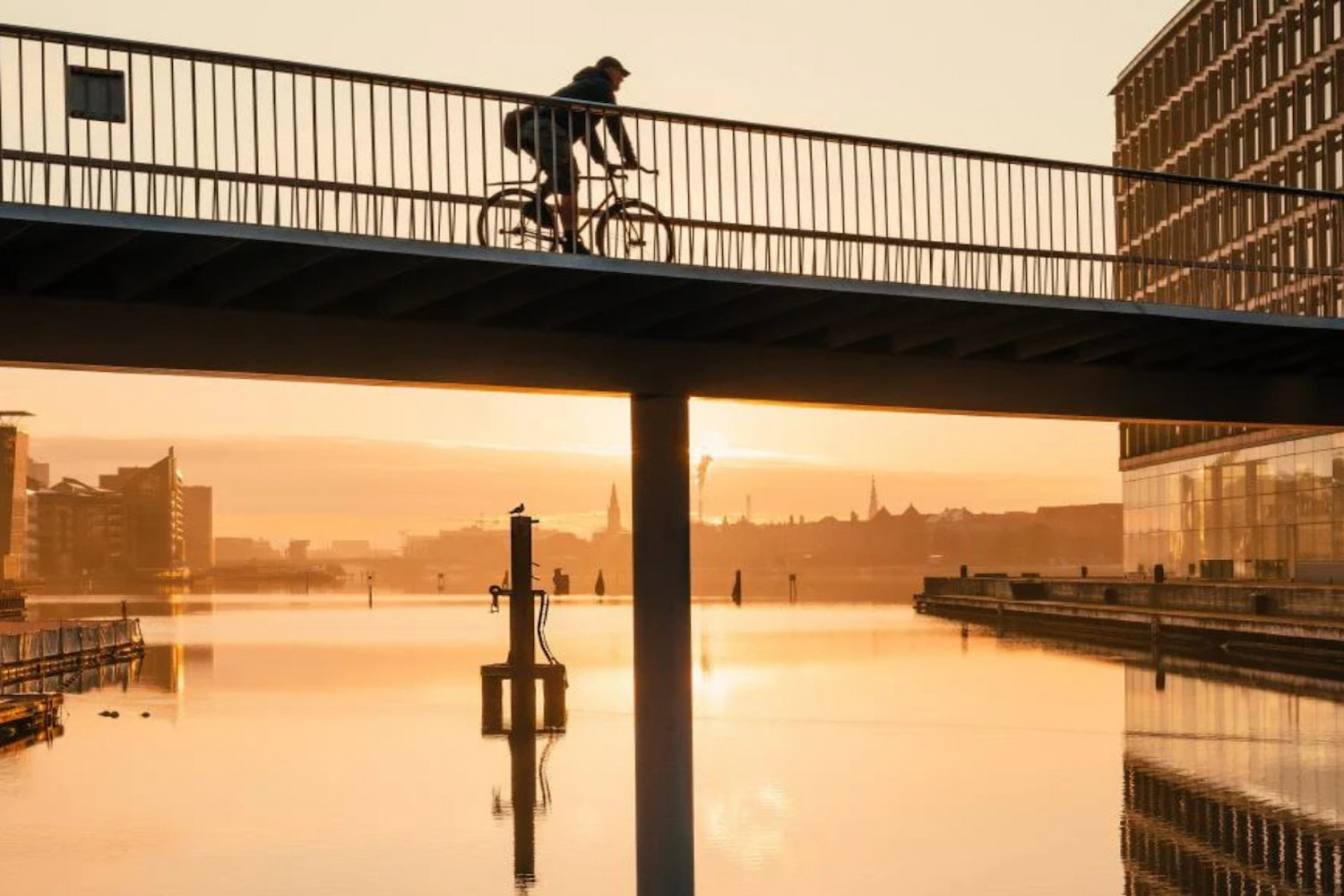
Sunset bicycle city scene. Courtesy of Visit Copenhagen..
The Visitor’s Point of View
For visitors, these measures are not abstract policy points — they shape the lived experience of the city. You feel them in the quiet hum of electric ferries; in the footrests and countdown lights that make cycling smoother at intersections; in the ease of finding an eco-certified hotel room; and in the confidence that when it rains hard, the streets are designed to carry water into gardens and canals rather than into basements.
Copenhagen still wrestles with big-city pressures — expensive rents, crowded bike lanes, and the hard trade-offs of decarbonization — yet daily life here shows what’s possible when environmental goals are built into the way a city functions. Its clean harbor, bike highways, and community-driven architecture are not isolated achievements; together, they create a template that other cities study and borrow from.
At Azure Road, we look for places where sustainability is not a branding exercise but a lived reality. Copenhagen’s story is one of ambition backed by results, of systems designed for resilience, and of a culture that treats environmental progress not as a chore but as a community-building effort. For locals, it means a healthier, more livable city. Who wouldn’t want a clean, swimmable harbor or quiet buses? For travelers, it means the chance to experience sustainability as part of everyday life. That is why Copenhagen deserves its place in our Sustainable City Guides.
For more information on the city, planning a trip, or Copenhagen’s sustainability initiatives, visit Wonderful Copenhagen.

Founder and CEO of Azure Road, Lauren Mowery is a longtime wine, food, and travel writer. Mowery continues to serve on Decanter Magazine’s 12-strong US editorial team. Prior to joining Decanter, she spent five years as the travel editor at Wine Enthusiast. Mowery has earned accolades for her writing and photography, having contributed travel, drinks, food, and sustainability content to publications like Food & Wine, Forbes, Afar, The Independent, Saveur, Hemispheres, U.S. News & World Report, SCUBA Diving, Plate, Chef & Restaurant, Hotels Above Par, AAA, Fodors.com, Lonely Planet, USA Today, Men’s Journal, and Time Out, among others.
Pursuing her Master of Wine certification, she has also been a regular wine and spirits writer for Tasting Panel, Somm Journal, VinePair, Punch, and SevenFifty Daily. Mowery is a graduate of the University of Virginia and Fordham Law School, and she completed two wine harvests in South Africa.
Follow her on Instagram @AzureRoad and TikTok @AzureRoad
North Stars: Climate Action, Energy Efficiency, Water Management


